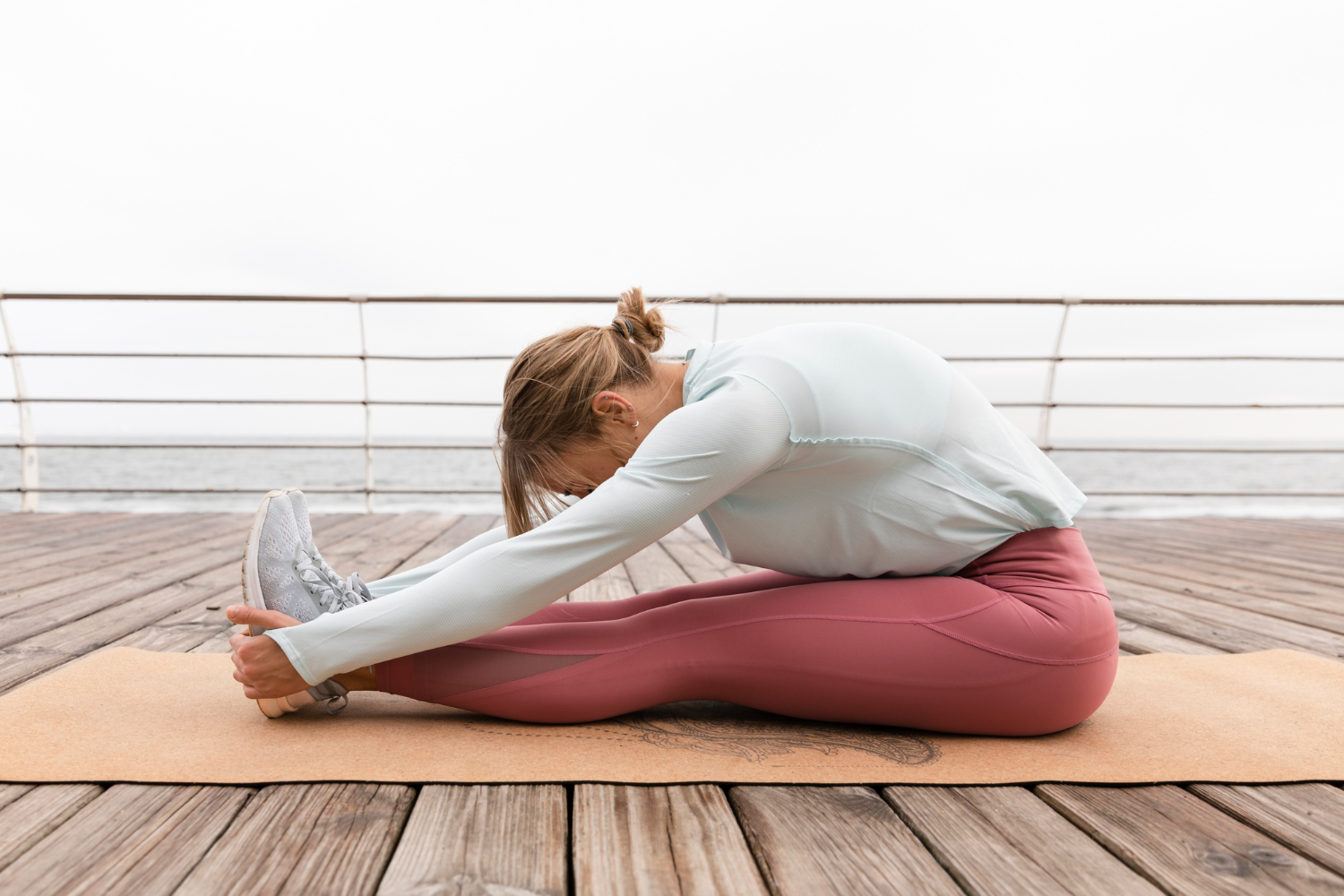{{ banner_block|raw }}
What is the IT band and why does it get tight?
The iliotibial (IT) band is a thick band of connective tissue that runs along the outside of your thigh, from your hip to just below your knee. It stabilizes the knee and hip during movement, especially in activities like running, cycling, and squatting. Overuse, improper mechanics, or muscle imbalances can lead to a tight IT band — a common issue for active individuals.

Causes and symptoms of IT band syndrome
Iliotibial band syndrome (ITBS) occurs when the IT band becomes irritated and inflamed, often due to repetitive motion. Common causes include:
Running on uneven surfaces
Weak hip or glute muscles
Improper footwear or form
Sudden increases in training intensity
Symptoms may include:
Sharp or burning pain on the outside of the knee
Hip tenderness or tightness
Discomfort during or after exercise
Benefits of stretching the IT band
Incorporating targeted IT band stretches into your routine can:
Relieve tension in the hip and knee
Prevent or reduce pain from IT band syndrome
Improve flexibility and joint mobility
Support proper biomechanics for running and squatting
Pro tip: Stretches for IT band tightness are especially helpful when paired with strengthening and foam rolling.
How to perform IT band stretches safely
Before you dive in, keep this in mind:
Warm up first — dynamic movement is ideal.
Breathe deeply and avoid bouncing.
Hold each stretch for at least 30 seconds per side.
Avoid overstretching — discomfort is okay, but sharp pain isn’t.
{{ post_23|raw }}
Standing IT band stretches
Try these moves to stretch on the go or post-workout:
1. Cross-leg standing stretch
Stand tall and cross your right leg behind your left.
Lean to the left side, reaching your right arm overhead.
Hold and switch sides.
2. Wall lean stretch
Stand sideways next to a wall, your outside arm pressing into it.
Cross your outer foot behind the other and push your hip toward the wall.
Stretch should be felt along your outer thigh.
Seated and lying IT band stretches
Perfect for winding down or during a recovery day:
1. Seated figure-four stretch
Sit on the ground, cross your right ankle over your left knee.
Gently lean forward until you feel a stretch in your glutes and outer thigh.
2. Supine IT band stretch
Lie on your back, extend your right leg up.
Use a strap or towel to guide your leg across your body to the left.
Keep shoulders grounded.
Foam rolling techniques for the IT band
While you technically can't “stretch” the IT band directly, foam rolling can reduce tightness by addressing surrounding tissues:
Foam roller IT band stretch:
Lie on your side with the roller under your outer thigh.
Support your body with your arms and opposite leg.
Roll slowly from the hip to just above the knee.
Hurts so good? That’s normal — but ease up if it feels sharp or stabbing.
Incorporating IT band stretches into your routine
Consistency is key. Add these stretches:
Post-run or workout cooldown
During active recovery days
After long periods of sitting
Even just 5–10 minutes a day can reduce pain and improve flexibility.
When to seek professional help
If pain persists despite regular stretching and foam rolling, it may be time to:
Visit a physical therapist
Get a gait analysis
Consider orthotics or a training plan review
Don't push through intense discomfort — early intervention can prevent long-term injury.
✅ Eat well. Train regularly. Stay consistent. You’ve got this.
🎉 Ready to take the next step?
Get 70% OFF your StarFit subscription with our exclusive promo!
👉 MEDIUM
Access expert-led programs, track your progress, and build the body (and lifestyle) you deserve — all in one place.
Don’t wait — the offer won’t last forever!
















